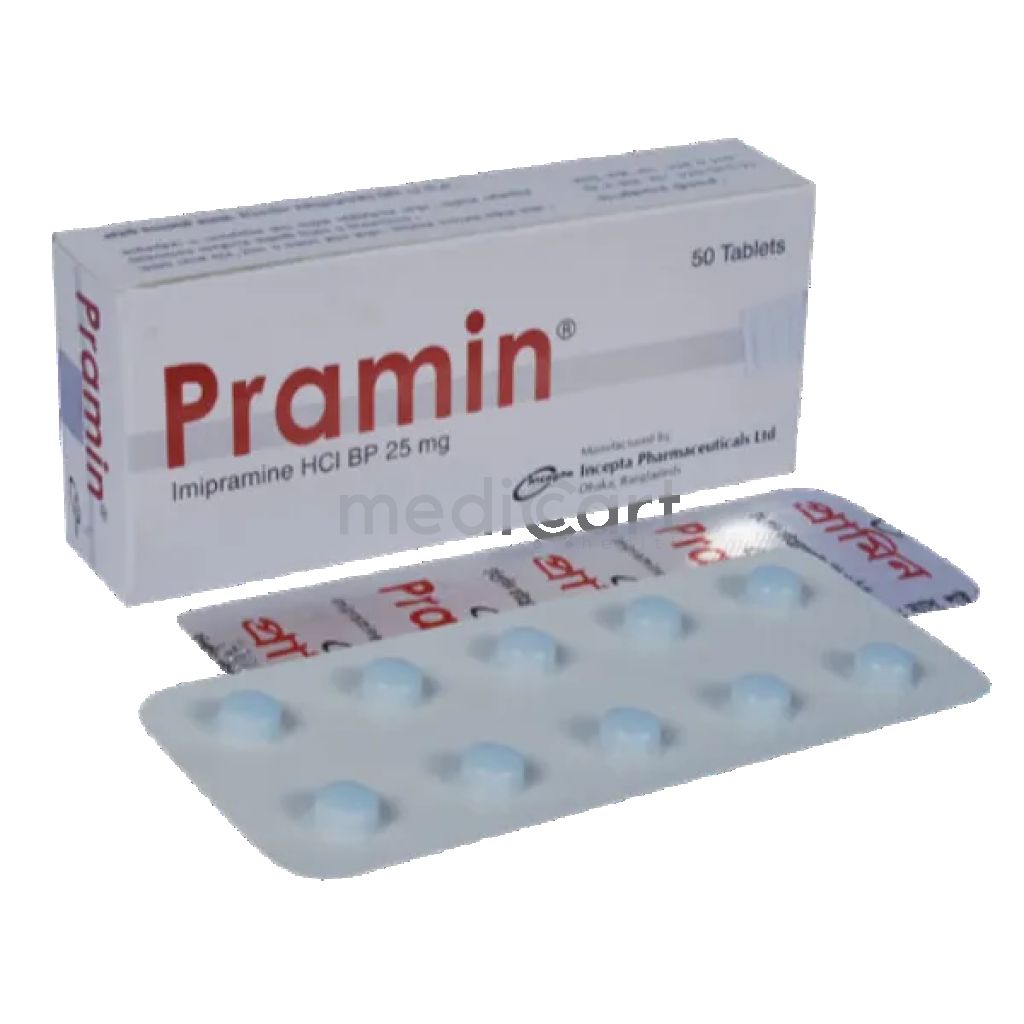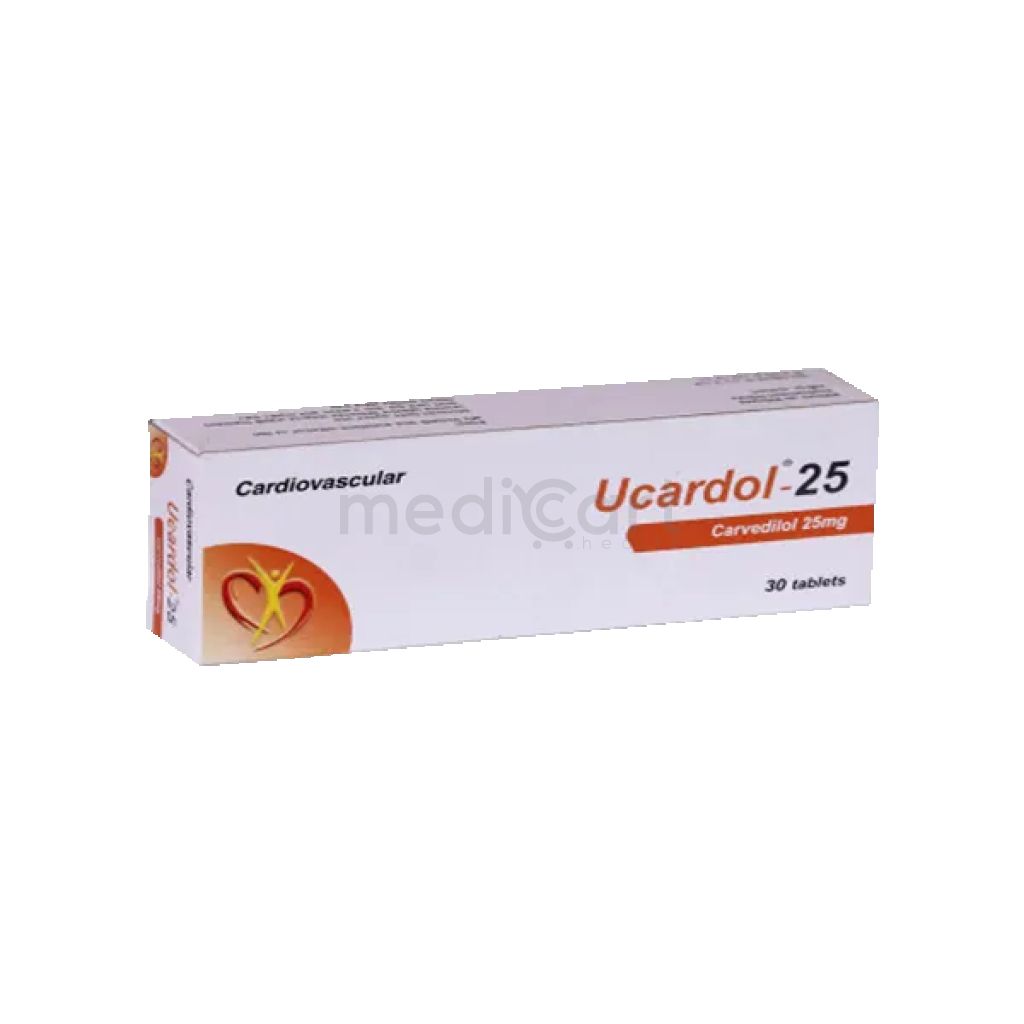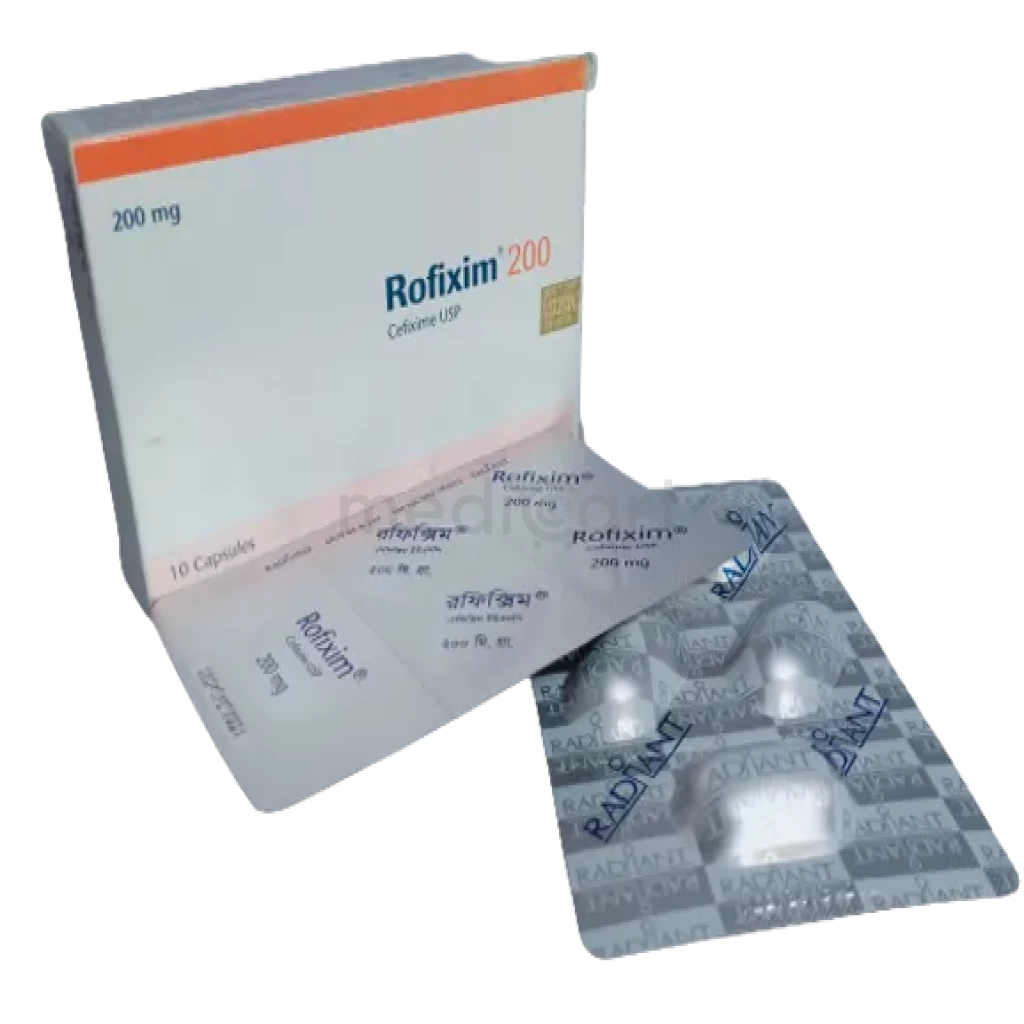

Imnoc 25 - 25mg
Tablet
Pack Size :
10 Tablet x 1 Strip
Generics :
Imipramine Hydrochloride
Manufacturer :
Unimed & Unihealth Manufacturers Ltd.
Best Price *
TK
40.00
* Delivery will be done in Dhaka city only.
More Information About - Imnoc 25 - 25mg
Description
Generic Name
Imipramine HydrochloridePrecaution
Imipramine should be used cautiously and with close physician supervision in people, especially the elderly, who have benign prostatic hypertrophy, urinary retention, and glaucoma, especially angle-closure glaucoma. The sedative effect is increased when imipramine is taken with other central nervous system depressants, such as alcoholic beverages, sleeping medications, other sedatives, or antihistamines. Imipramine may increase heart rate and stress on the heart. It may be dangerous for people with cardiovascular disease, especially those who have recently had a heart attack, to take this drug or other antidepressants in the same pharmacological class. Older people and persons with a history of heart disease may develop heart arrhythmias, heart conduction abnormalities, congestive heart failure, heart attack, abnormally rapid heart rates and strokes. Until a therapeutic dosage has been determined, people starting imipramine should be closely watched for signs of suicide. The risk of suicide is increased when imipramine is taken in overdose or combined with alcohol. Manic episodes and the emergence of symptoms of pre-existing psychotic states have been reported when imipramine therapy is started. In short-term studies, antidepressants increased the risk of suicidal thinking and behavior in children, adolescents, and young adults (<24 years) taking antidepressants for major depressive disorders and other psychiatric illnesses. Patients should be monitored closely for changes in behavior, clinical worsening, and suicidal tendencies; this should be done during the initial 1-2 months of therapy and dosage adjustments Lactation: Distributed in breast milk; do not nurse (AAP states effect on nursing infants is unknown but may be of concern)Indication
Depression, Nocturnal enuresisContra Indication
Any degree of heart block or cardiac arrhythmias, recent MI, porphyria, narrow-angle glaucoma, urine retention, mania. Severe hepatic impairment. Childn <6 yr. Concomitant use w/ MAOIs.Dose
N/ASide Effect
Orthostatic hypotension, HTN, tachycardia, palpitation, MI, arrhythmias, heart block, ECG changes, precipitation of CHF, stroke; confusional states (esp in elderly) w/ hallucinations, disorientation, delusions; anxiety, restlessness, agitation, insomnia and nightmares, hypomania, exacerbation of psychosis; numbness, tingling, paraesthesias of extremities; incoordination, ataxia, tremors, peripheral neuropathy, extrapyramidal symptoms, seizures, altered EEG patterns, tinnitus; dry mouth; rarely, associated SL adenitis; blurred vision, accommodation disturbances, mydriasis, constipation, paralytic ileus, urinary retention, delayed micturition, dilated urinary tract; skin rash, petechiae, urticaria, itching, photosensitization, oedema, drug fever; bone marrow depression, agranulocytosis; eosinophilia, purpura, thrombocytopenia; nausea and vomiting, anorexia, epigastric distress, diarrhoea, peculiar taste, stomatitis, abdominal cramps, black tongue; gynaecomastia (male), breast enlargement and galactorrhea (female), increased/decreased libido, impotence, testicular swelling, increased/decreased blood sugar levels, inappropriate antidiuretic hormone secretion syndrome; jaundice, altered liver function, wt gain/loss, perspiration, flushing, urinary frequency, drowsiness, dizziness, weakness and fatigue, headache, parotid swelling, alopecia, proneness to falling.Pregnancy Category
Name : D
Description
There is positive evidence of human fetal risk based on adverse reaction data from investigational or marketing experience or studies in humans, but potential benefits may warrant use of the drug in pregnant women despite potential risks.Mode of Action
Imipramine is believed to increase the synaptic concentration of serotonin and/or norepinephrine in the CNS by inhibition of their reuptake by the presynaptic neuronal membrane. However, additional receptor effects have been found including desensitisation of adenyl cyclase, down regulation of ?-adrenergic receptors, and down regulation of serotonin receptors.Interaction
Increased plasma levels and effects with quinidine, cimetidine, SSRIs, propafenone, flecainide. Reduced plasma levels with barbiturates, phenytoin. May increase effects of anticholinergic drugs. Severe orthostatic hypotension with altretamine. Causes drowsiness and impaired performance in combination with alcohol. Potentially Fatal: Severe hypertension with adrenaline, noradrenaline and methylphenidate. Reduces hypotensive effects of guanethidine, bethanidine, debrisoquine, bretylium, methyldopa and clonidine. Possible serotonin syndrome with MAOIs, separate admin by 3 wk.Pregnancy Category Note
Pregnancy category: D Lactation: Distributed in breast milk; do not nurse (AAP states effect on nursing infants is unknown but may be of concern)Adult Dose
Oral Depression Adult: Initially, 75 mg in divided doses, may gradually increase to 150-200 mg daily as necessary. Max: 300 mg/day. May give in divided doses or single dose HS Maintenance dose: 50-100 mg PO qDay Elderly: 10 mg daily, may gradually increase to 30-50 mg daily. Hepatic impairment: Severe: Contraindicated.Child Dose
Oral Nocturnal enuresis Child: 6-7 yr 20-25 kg: 25 mg; 8-11 yr 25-35 kg: 25-50 mg; >11yr 35-54 kg: 50-75 mg. Doses are given just before bedtime. Max treatment duration: 3 mth.Renal Dose
N/AAdministration
May be taken with or without food.Disclaimer
The information provided herein are for informational purposes only and not intended to be a substitute for professional medical advice, diagnosis, or treatment. Please note that this information should not be treated as a replacement for physical medical consultation or advice. Great effort has been placed to provide accurate and comprehensive data. However, Medicart along with its authors and editors make no representations or warranties and specifically disclaim all liability for any medical information provided on the site. The absence of any information and/or warning to any drug shall not be considered and assumed as an implied assurance of the Company.








